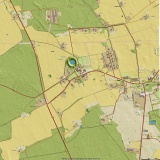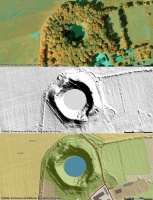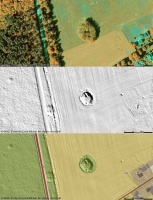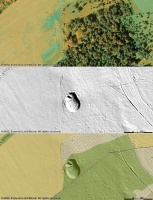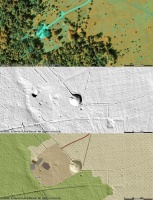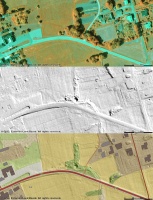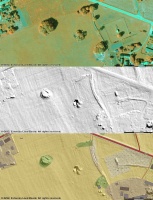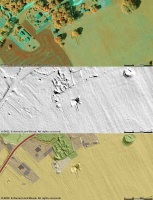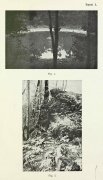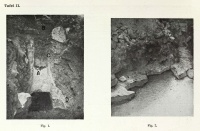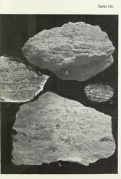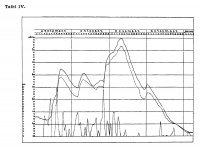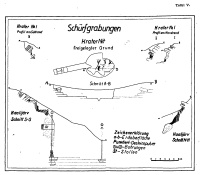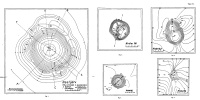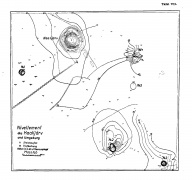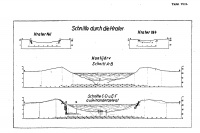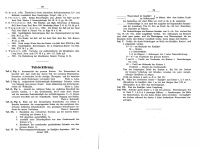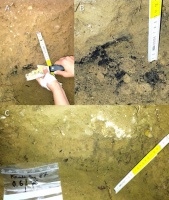(Unless otherwise stated, the copyright of the materials included belong to Jan Woreczko & Wadi.)
Kratery Kaalijärv
Z Wiki.Meteoritica.pl
m |
m |
||
| Linia 49: | Linia 49: | ||
File:Kaalijärv_(Reinwaldt_1928_tafel-8).jpg| | File:Kaalijärv_(Reinwaldt_1928_tafel-8).jpg| | ||
File:Kaalijärv_(Reinwaldt_1928_tafel-descr).jpg|Opis plansz | File:Kaalijärv_(Reinwaldt_1928_tafel-descr).jpg|Opis plansz | ||
| + | </gallery> | ||
| + | |||
| + | |||
| + | <gallery caption="" widths="200px" heights="200px" perrow="3"> | ||
| + | File:Morasko_(Łosiak_2022_figS01).jpg|([[Szablon:Łosiak (2022)|Łosiak et al. 2022]]): '''Figure S1.''' Zones that are particularly charcoal-rich zones within proximal ejecta of {{Txt2Img|Kaalijärv_craters_(2and8_Maa-amet).jpg|Kaali 2/8 crater}} (Estonia). When these larger pieces were removed from the sediment, they disintegrate into small pieces (as visible on photo B). Based on particle morphology they seem to be formed from a single piece of branch that was buried within ejecta, that were later charred and crushed by the overlaying sediment. | ||
</gallery> | </gallery> | ||
Wersja z 21:25, 4 wrz 2022
Grupa kraterów impaktowego pochodzenia
| Kaalijärv [crater] → | |
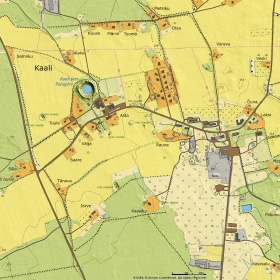
Kratery Kaalijärv (na mapie zaznaczono położenie kraterów; relief plus mapa podstawowa) (źródło: Maa-amet (X-GIS 2.0))
| |
| Krater impaktowy (impact crater) | |
| Lokalizacja | Saaremaa, Estonia |
| Położenie[1] | 58°22'22"N, 22°40'06"E |
| Uwagi | w ich okolicy znajdowane są meteoryty żelazne Kaalijarv |
| Charakterystyka | |
| Wiek | ich powstanie datowane jest na ok. 3500 lat temu |
| Średnica | największy krater ma ok. 110 m |
| Cechy | dziewięć kraterów |
| Meteoritical Bulletin Database | |
| Synonimy → | |
| Kaali crater | |
- Opis patrz → meteoryt Kaalijarv.
Galerie
Grupa kraterów Kaalijärv (źródło: Maa-amet (X-GIS 2.0))
(mozaiki: górna mapa – ortofotomapa (false-color NGR[2]); środkowa – relief (DEM, digital elevation model); dolna – relief plus mapa)
Źródło: Reinwaldt (1928)
(Łosiak et al. 2022): Figure S1. Zones that are particularly charcoal-rich zones within proximal ejecta of Kaali 2/8 crater (Estonia). When these larger pieces were removed from the sediment, they disintegrate into small pieces (as visible on photo B). Based on particle morphology they seem to be formed from a single piece of branch that was buried within ejecta, that were later charred and crushed by the overlaying sediment. |
Na terenie Estonii znajduje się jeszcze jedna grupa kraterów o potwierdzonym kosmicznym pochodzeniu – Ilumetsä.[3]
Bibliografia
- Patrz → meteoryt Kaalijarv
Przypisy
Zobacz również
- meteoryt Kaalijarv
Linki zewnętrzne
- Meteoritical Bulletin Database (MBD) – krater Kaalijärv [crater]
- Meteoritical Bulletin Database (MBD) – krater Ilumetsä
- Wikipedia (EN) – List of impact craters on Earth
